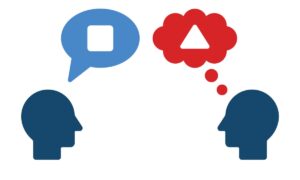Understanding the buyer’s journey is not just beneficial—it’s essential. The manufacturing industry, once driven primarily by face-to-face sales and traditional marketing, has undergone a digital transformation. Buyers now demand more control, information, and personalization in their purchasing experience. Hence, manufacturers must map out, track, and optimize every phase of the buyer’s journey to stay competitive.
What Is the Buyer’s Journey in the Manufacturing Industry?
The buyer’s journey refers to the active process that a potential customer undergoes before making a purchasing decision. In manufacturing, this journey is typically longer and more complex due to the high-value, technically intricate nature of products. This path includes three major stages: Awareness, Consideration, and Decision.
Unlike consumer markets where buying decisions are often impulsive, industrial buyers take their time. They require detailed technical data, case studies, whitepapers, and ROI assessments before committing. Therefore, manufacturers must understand how these buyers think and what influences their decision-making process.
Stage One – Awareness: Recognizing the Need for a Solution
At this initial stage, the buyer realizes they have a problem or a need. However, they may not yet know what solution they require. For example, a plant manager might notice an increase in energy consumption but may not immediately understand that outdated machinery is the root cause.
This phase is crucial because the content you provide must educate, not sell. Blog posts, explainer videos, and industry news articles are ideal here. They allow the manufacturer to position themselves as thought leaders while helping the buyer diagnose their problems.
Moreover, using SEO-driven content in this stage is vital. Keywords like “energy-efficient manufacturing solutions” or “reducing downtime in production” should be naturally embedded into your content to attract organic traffic.
Stage Two – Consideration: Exploring and Comparing Possible Solutions
Once the buyer identifies their need, they begin evaluating possible solutions. At this point, they seek deeper, more technical content. They are not only aware of the problem—they are actively searching for ways to fix it.
Now, manufacturers must demonstrate the value of their solutions without being overly promotional. Whitepapers, product comparison charts, engineering webinars, and technical datasheets become pivotal.
During this stage, using strategic CTAs (Calls to Action) like “Download Our Maintenance Cost Comparison Sheet” helps guide the buyer further along the journey. It’s also the right time to introduce case studies that highlight how your solutions have helped similar clients in their industry.
Stage Three – Decision: Choosing the Right Manufacturer or Supplier
When buyers reach the decision stage, they are ready to make a purchase. They have thoroughly researched their options and are comparing final details. In manufacturing, these details often include ROI, maintenance plans, customer support, and integration compatibility.
Here, manufacturers should provide detailed demos, pricing guides, product trials, and customer testimonials. Making this information easily accessible is key to reducing friction and moving the buyer toward conversion.
Additionally, having sales and marketing teams aligned ensures that communication is smooth and responsive. A delay or misstep at this point can cost you the sale. Therefore, proactive engagement, fast follow-ups, and clear proposals are essential.
Why Tracking the Buyer’s Journey Matters More Than Ever
Previously, tracking buyer behavior was a guessing game. Sales teams relied heavily on cold calls and industry contacts. However, with the advent of digital tools, manufacturers now have the ability to monitor user behavior in real time. This data provides deep insights into what content the buyer interacts with, which solutions they’re comparing, and how often they revisit your site.
By leveraging marketing automation platforms, manufacturers can set up lead scoring systems, segment their audiences, and send personalized emails based on behavior. For example, if a buyer downloads a whitepaper on CNC machine maintenance, they can automatically be added to a nurturing campaign related to predictive maintenance technology.
Tools That Help Track the Buyer’s Journey in Manufacturing
To effectively monitor and optimize the buyer’s journey, manufacturers need the right tools. Here are a few to consider:
- Customer Relationship Management (CRM) Systems: Tools like Salesforce or HubSpot allow tracking of interactions, follow-ups, and buyer preferences.
- Marketing Automation Platforms: These platforms enable email drip campaigns, landing page tracking, and behavioral analytics.
- Web Analytics Tools: Google Analytics or Hotjar provides insights into how users navigate your website and which pages hold their attention.
- Heatmaps and Session Recordings: These tools help visualize how users interact with your site and where they drop off.
Each tool brings a layer of insight. When combined, they create a 360-degree view of the buyer’s journey, allowing manufacturers to be more responsive and accurate in their approach.
The Role of Sales and Marketing Alignment in the Buyer’s Journey
One common challenge in manufacturing is the disconnect between sales and marketing teams. Sales often claims that leads are unqualified, while marketing insists they’re not being followed up effectively. This gap can be devastating in a long B2B buying cycle.
To bridge this divide, both teams must work from a shared definition of what a qualified lead is. Additionally, using shared dashboards that display lead scores, engagement metrics, and sales activities creates transparency. Weekly sync meetings can help both departments stay aligned and adaptable.
Furthermore, when marketing knows which pieces of content drive the most conversions, they can create more of it. Likewise, when sales knows what questions prospects are asking early in the journey, they can better anticipate objections and tailor their pitches accordingly.
Content Strategy That Supports Every Phase of the Journey
Each stage of the buyer’s journey requires unique content. However, content must also be interconnected and accessible. This way, a buyer can seamlessly move from a blog post to a technical guide or from a video to a consultation form.
Here’s a quick content breakdown by journey stage:
- Awareness: Educational blog posts, infographics, industry news, and explainer videos.
- Consideration: Product guides, case studies, comparison charts, and technical webinars.
- Decision: Customer testimonials, demos, ROI calculators, and detailed proposals.
Always use internal linking to help guide the buyer from one piece of content to the next. Not only does this improve user experience, but it also enhances your site’s SEO by spreading link equity across key pages.
Key Metrics to Monitor When Tracking the Buyer’s Journey
Measuring success means knowing what to track. Here are vital metrics manufacturers should monitor:
- Lead Source and Attribution: Know where your leads are coming from—search, referral, direct, or campaigns.
- Page Views and Time on Page: Identify which content is keeping buyers engaged.
- Conversion Rates: Track how many visitors turn into leads, and how many leads become customers.
- Lead Scoring Accuracy: Ensure that your scoring system reflects actual buyer intent.
- Sales Cycle Length: Measure how long it takes for a buyer to move through the funnel.
- Tracking these metrics helps refine strategies and shorten the buying cycle over time.
Conclusion
Manufacturers can no longer afford to rely on traditional selling methods. In an era where B2B buyers are more informed and digitally savvy than ever, tracking the buyer’s journey provides a significant competitive edge. It empowers businesses to deliver the right message, at the right time, through the right channel.
By investing in the right tools, aligning sales and marketing, and creating stage-specific content, manufacturers can nurture leads more effectively and convert them into loyal customers. The journey may be complex, but with clear insights and responsive strategies, success is not only achievable—it’s sustainable.






























